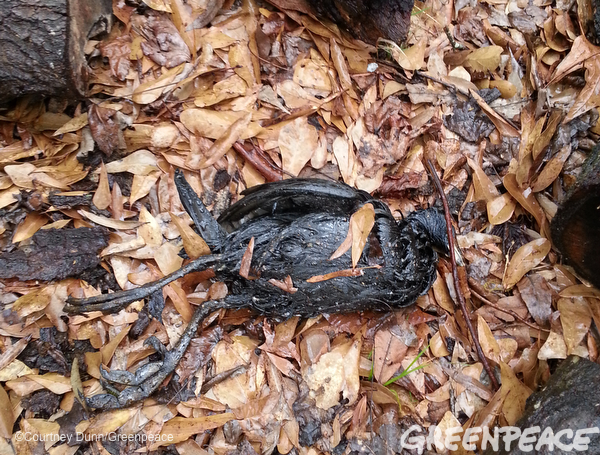Exxon’s tar sands pipeline spill in Mayflower, Arkansas is highlighting concerns about the proposed Keystone XL pipeline, and raising questions about the risks of existing pipelines transporting diluted tar sands crude. In a familiar pattern for the oil industry, Exxon is impeding access to the spill, controlling information about the impacts, and threatening reporters with arrest; as Little Rock, Arkansas based journalist Suzi Parker put it, “the company has instituted something like martial law.”
The Arkansas Attorney General has promised an investigation, but with Exxon running the show, many questions about the spill remain unanswered for now. We asked Rick Steiner, an oil spill expert who has helped communities and regulators hold oil companies responsible since the 1989 Exxon Valdez spill, for some important questions to try and get to the bottom of this most recent Exxon spill. Here are Steiner’s suggestions:
1. Why did this pipeline rupture happen?
2. When was the last time Exxon or the Pipeline and Hazardous Materials Safety Administration (PHMSA) inspected the pipeline segment in question?
3. What exactly were the results of the most recent inspection?
4. Exactly when did the leak detection system send an alarm?
5. How long after the leak detection alarm did it take Exxon to shut down the flow through? It is inexcusable that 10,000+ barrels came out without the flow being suspended.
6. When was the pipeline last pigged? (Pipeline Inspection Gauge = PIG)
7. What was the last maintenance on this segment of the pipeline, e.g., replacement?
8. Dilbit pipelines run much hotter, and thus have more corrosion, and thus have 2-3 times the failure rate of normal crude pipelines. What additional design factors were incorporated into the Pegasus pipeline to accommodate this added risk?
9. Exactly which tar sands crude mixture was in the pipe?
10. Is an environmental damage assessment currently being conducted?
11. What amount of oil has been collected in the cleanup?
12. Is Exxon prepared to pay local property owners for their losses, and to cover all cleanup costs?
13. How can the US public trust Exxon in operating a safe pipeline with tar sands oil in it?
14. Given Exxon’s professed commitment to the highest standards for its global oil production and transportation operations, how could this possibly happen, right under the watchful eye of Exxon management and federal regulators?

A dead American Coot covered in oil lies among leaves and branches near the Bell Slough Wildlife Management Area near Mayflower, Arkansas April 2, 2013.


